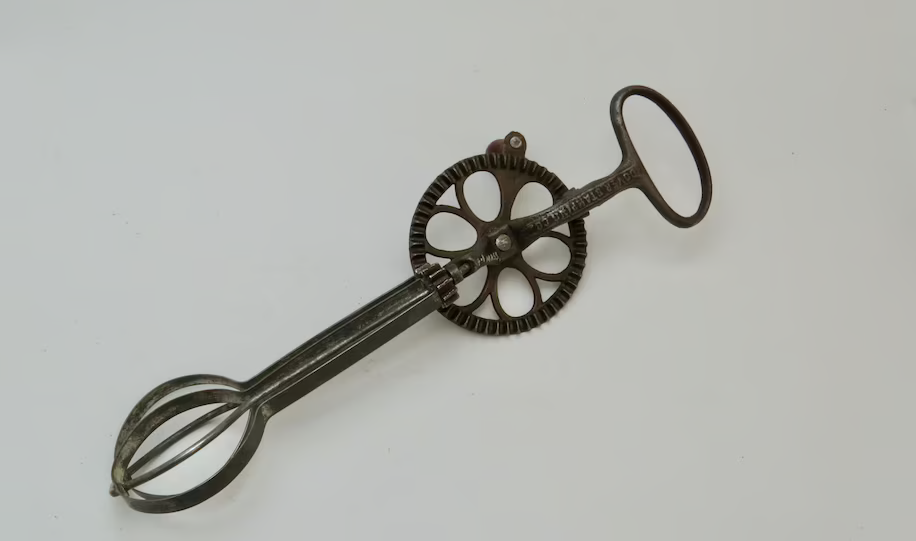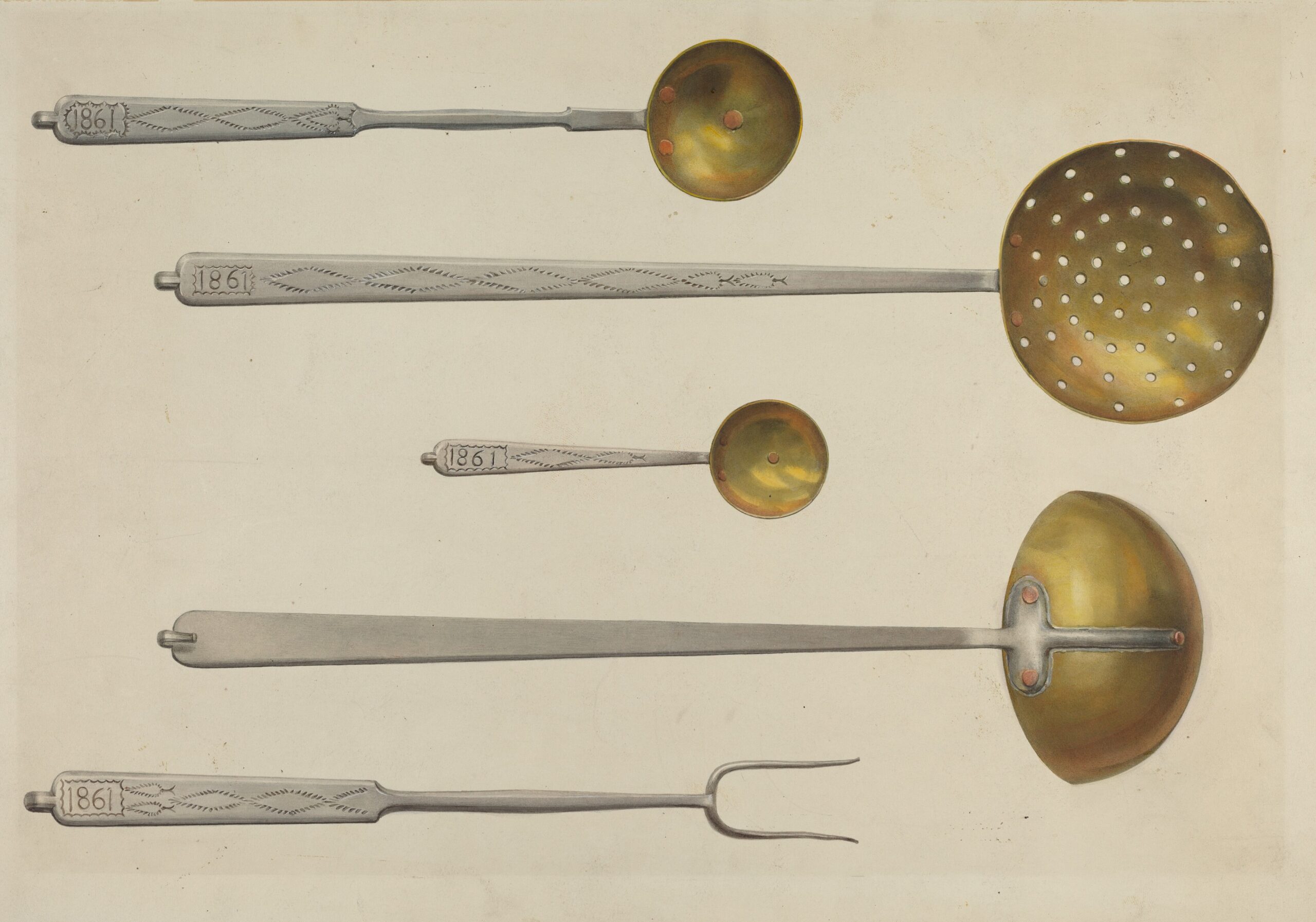“Kitchen Utensils,” Fritz Boehmer, c. 1939. National Gallery of Art.
Image Citation. https://www.nga.gov/collection/art-object-page.26301.html.

| Tool | Description |
| Egg Beater | Manual tool typically used to beat eggs, batters, sauces, creams, and other similar liquid mixtures. Unlike whisks, which are meant to combine ingredients, egg beaters are used to incorporate air into the mixture. |
| Rotary Egg Beater | “Rotary” describes the fact that early egg beaters were very specifically hand-cranked to turn a central wheel, which would, in turn, rotate the whisk head or heads at the bottom. Most egg beaters mentioned in vintage recipes are most likely “rotary” egg beaters because that was the most widely used type. |
| Dover Egg Beater | Dover Stamping Company, Manufacturers and Dealers in Tinners’ Hardware & Furnishing Goods, operated out of Boston, Massachusetts throughout the mid to late nineteenth century. “Dover” became synonymous with rotary egg beater because of their stamp on this specific type of tool. “Dover egg beater” could, therefore, refer to an actual Dover Egg Beater or simply any rotary egg beater. |

| Utensil | Description |
| Teaspoon | Originally a small spoon used for stirring drinks, such as tea or coffee. Its’ standardized measurement is now 5 milliliters in the USA. |
| Tablespoon | Originally functioned as a spoon that was brought to the table to be used for place-setting (table-spoon) or for eating soup before the addition of a soup spoon. After the soup spoon, tablespoons took on the role of serving spoons. The standardized measurement of a tablespoon in the USA is approximately 14.8 milliliters. |
| Dessertspoon | Originally designed for specifically eating dessert. It is a similar size to a soup spoon, but instead of a round bowl, its shape is oval. It is not a standardized measurement, but it usually has twice the capacity of a teaspoon, holding approximately 10 milliliters. |

Sources
https://www.thehenryford.org/collections-and-research/digital-collections/artifact/188296/
https://www.historicnewengland.org/explore/collections-access/capobject/?refd=EP001.12.010.001.030
Moore, Simon (1987). Spoons 1650–1930. Shire Publications. p. 12.
“The Secret of the Formal Place Setting”. Diner’s Digest. CyberPalate LLC. 1997.
